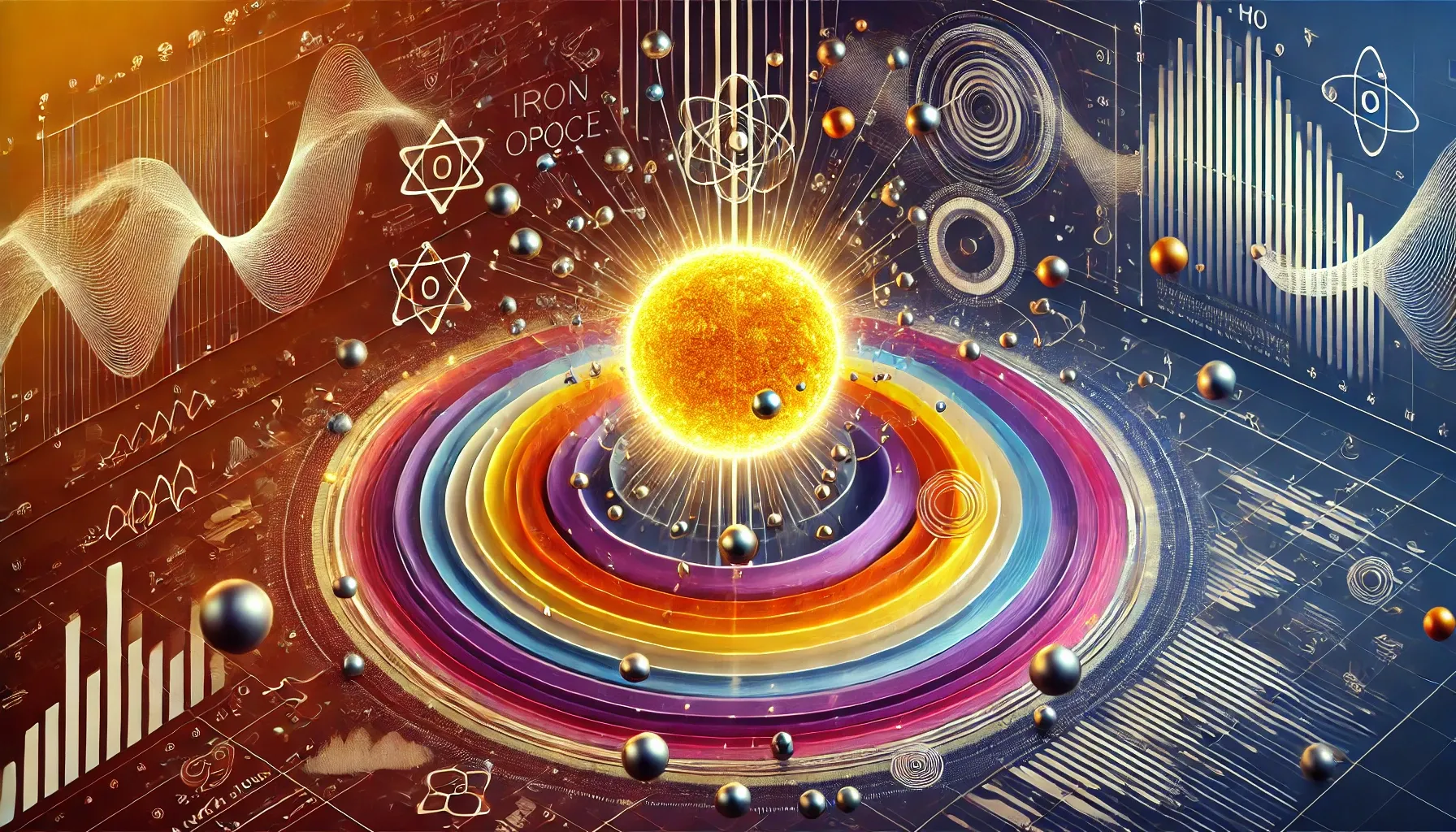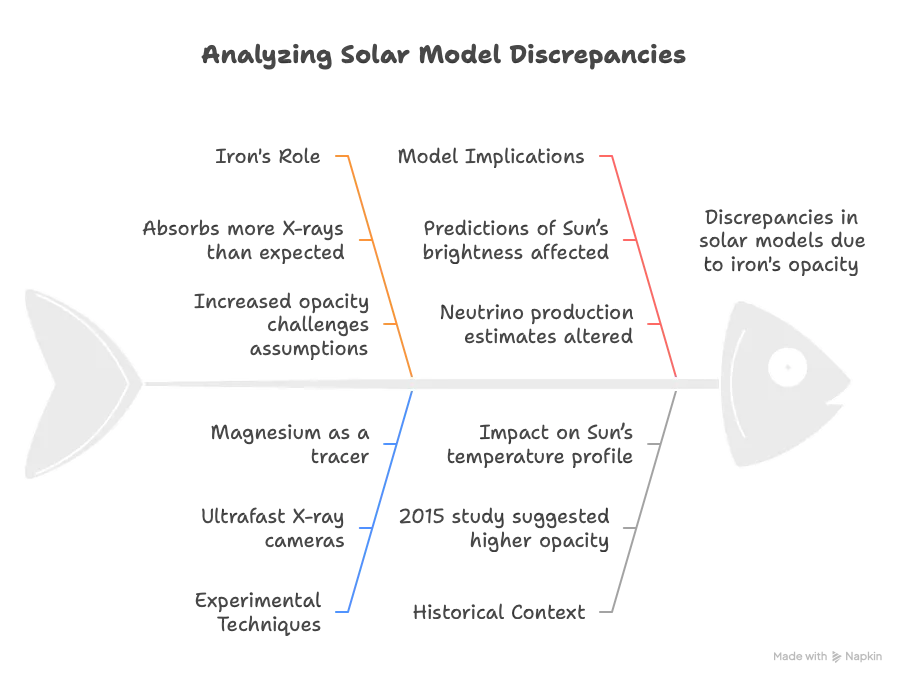UPSC
The Hindu Briefs
Iron Opacity and Solar Modelling: Key Insights
Last Updated
8th April, 2025
Date Published
8th April, 2025
Share This Post With Someone


- Solar Modelling Challenge: Scientists have identified a discrepancy in solar models due to iron's opacity, which affects how energy moves inside the Sun, critical for understanding stellar behavior.
- Iron’s Role: Iron, a heavy element in the Sun, absorbs more X-rays than expected, making it more opaque and challenging previous assumptions about solar energy transfer.
- Sandia Experiment: At Sandia National Laboratories, USA, researchers used X-rays to test iron opacity under Sun-like conditions, exposing a thin iron sample mixed with magnesium.
- Advanced Technology: Ultrafast X-ray cameras recorded changes in temperature and density over a billion times per second, revealing how iron behaves in extreme conditions.
- Findings: The study showed that iron’s opacity is higher than predicted, contradicting the idea that temporal changes alone caused the model-data mismatch.
- Implications for Models: Solar models, vital for predicting the Sun’s brightness and neutrino production, may need revision as they rely on accurate opacity data.
- Measurement Technique: Magnesium acted as a tracer, helping measure electron energy and density, while iron’s opacity was inferred from the X-ray shadow it cast.
- Complexity of Revision: Adjusting solar models is difficult due to their complexity, requiring supercomputers, and past discrepancies were linked to element abundance errors.
- Historical Context: A 2015 study suggested a 15% higher opacity could resolve the issue, impacting the Sun’s temperature profile and energy dynamics.
- Broader Impact: Understanding iron opacity enhances knowledge of the Sun and other stars, refining theories used to simulate stellar properties across the universe.
Glossary
- Opacity: The measure of how much a material blocks or absorbs radiation, like X-rays or light.
- Solar Model: A scientific framework simulating the Sun’s internal processes, such as energy transfer and nuclear fusion.
- X-rays: High-energy electromagnetic radiation used to study material properties under extreme conditions.
- Neutrino: A nearly massless particle produced in the Sun’s core during nuclear fusion.
- Spectrometer: An instrument that analyses the properties of light or radiation passing through a sample.
Link To The Original Article – https://www.thehindu.com/sci-tech/science/iron-opacity-solar-modelling-problem-sandia-x-rays-temporal-data/article69302460.ece